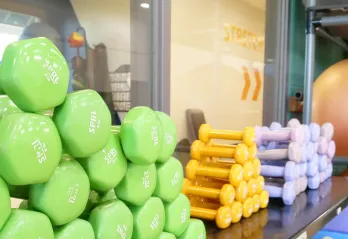Beginner Transformations: The First Year and Beyond

When you start working out, your body responds quickly. Beginners can make serious changes in a short amount of time, often seeing noticeable strength gains, fat loss, and muscle growth within weeks or months. But as time goes on, progress naturally slows down. Understanding this cycle can help you set realistic expectations and stay committed for the long haul.
The Best and Worst News About Beginner Gains
- Best: As an untrained person, your body rapidly adapts to exercise, making it easy to see visible progress early on.
- Worst: These rapid results don’t last forever. Over time, the margin for visible change decreases, making continued progress feel slower and harder.
Why Do Beginners See Such Quick Results?
- Neuromuscular Adaptations – Your body learns to recruit muscles more efficiently, making you stronger without necessarily gaining a lot of muscle mass. (Gabriel et al., 2006)
- Increased Muscle Glycogen Storage – When you start resistance training, your muscles store more glycogen, leading to a “fuller” appearance.
- Fat Loss Paired with Muscle Gain – If you’re new to training, you can lose fat and build muscle at the same time, something that becomes much harder later. (Stokes et al., 2018)
Why Using Beginner Results as Proof Is Misleading
Many fitness programs advertise dramatic transformations in just weeks, showing impressive before-and-after photos. But these short-term results are often:
- From beginners, who naturally progress faster.
- Not sustainable at the same rate long-term.
- Misleading in terms of what’s realistic after the initial phase.
For example, a two-week challenge might show rapid toning effects, but it’s often due to water weight loss, glycogen shifts, or an extreme calorie deficit. It doesn’t mean the program is uniquely effective—it just means beginner adaptations happen quickly.
How to Set Yourself Up for Long-Term Success
Celebrate Early Success, But Plan for the Long Game
- Enjoy your beginner gains, but recognize that progress will slow down. That’s normal!
Get Clear on Your Goals
- Do you want to get stronger? Build muscle? Improve endurance? Your training method should align with these goals.
Don’t Quit When Progress Slows
- Plateaus will happen. Your body adapts, and visible changes won’t always be dramatic. Stick with your routine, adjust your approach, and stay consistent.
Choose a Sustainable Method
- Instead of chasing quick fixes, pick a training style you can maintain long-term. Strength training, progressive overload, and well-balanced nutrition will yield better results over time than crash diets or short challenges.
Final Thoughts
Beginner transformations are exciting, but real progress happens over months and years, not just weeks. The best thing you can do is trust the process, stay consistent, and focus on long-term success rather than short-term results.
Author
